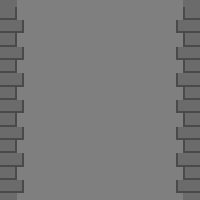Curriculum Information - Program Your Own Castle
Author & License
This curriculum has been created by LuCE Didactics Innovation Team and is licensed under CC BY-SA 4.0.
Competencies
Perform Output
Call a function to output a given value.
Practiced in 0 out of 4 activities:
If you program in Python using only the standard library, you often call print(...) to output text. We also use the PyTamaro graphics library, so we can call show_graphic(...) to output a graphic. print and show_graphic are functions; but unlike mathematical functions, they do not return an interesting value, but they have a 'side effect': every time you call them they change the world! They do so by outputting some text, or by outputting some graphic. It's important to understand that outputting something is not the same as returning something. If some code calls a function that returns something, that code can then use the returned value to do some more computation. If a function outputs something, the code cannot play with the output. The output is on your screen, on a printer, on a disk, on the network. It left the program. It has been sent to the outside world.
Distinguish Comments
Distingush between comments and interpreted code.
Practiced in 0 out of 1 activity:
Code can contain comments, which are not interpreted. They are there for us humans. Python ignores them. Comments start with a # and go to the end of the line.
Pass Arguments
Pass arguments to functions.
Practiced in 0 out of 9 activities:
A function may accept zero or more arguments. When you invoke the function, you pass those arguments between parentheses, separated by commas, like function_name(argument_1, argument_2).
Invoke Functions
Ask a function to do its computation and to return the result.
Practiced in 0 out of 6 activities:
A function represents a computation that can be performed by invoking it. Many Python functions work like function from mathematics: you provide some argument, and they return some result. For example, the sin function defined in the math library, when called with sin(0), returns the value 0.0. Or the drawbridge function from our library, when called with drawbridge(opened) returns an opened drawbridge.
Receive Return Value
Receive a return value from a function.
Practiced in 0 out of 6 activities:
A function returns a value. When you invoke the function, it returns a value, which you can assign to a name or you can pass as an argument to another function.
Import Names
Use import statements to import names from libraries.
Practiced in 0 out of 4 activities:
If you want to use something defined in a library, you need to first import it. An import statement like from colors import red, yellow makes the names red (which stands for the color red) and yellow (which stands for the color yellow), defined in the colors module of our library, available. An import statement like from pytamaro import show_graphic makes the name show_graphic, which was defined in the PyTamaro library, available for use.
Use Names
Access the value bound to a name by using the name in an expression.
Practiced in 0 out of 11 activities:
A name (imported from a library or defined in your code) is bound to a value. You can use that name to refer to the value that's bound to it. You may have used the name pi, which refers to an approximation of the number 𝛑 and is defined in the math library. Or you used the name print, bound to a function that outputs text. You use names in expressions. For example, pi * 2, or also just pi, are expressions that, when they get evaluated, look up and use the value that's bound to the name pi. Or print("Hi") is an expression that will look up the function bound to the name print and call it with the argument "Hi", which will cause the program to output Hi.
Define Names
Introduce a name for something, so you can then refer to that thing by using that name.
Practiced in 0 out of 4 activities:
You can assign a value to a name, so that you can refer to the value in a more readable way in other parts of your code. For example, you can write our_merlon = split_merlon, and now you can use our_merlon (instead of writing split_merlon) in the subsequent code. It is incredibly important to pick good names! If you see a well-chosen name, it will be clear what it stands for even without knowing its definition.
Literal Lists
Manually create a specific list of values.
Practiced in 0 out of 2 activities:
To specify a specific list of graphics, you can use a list literal like [pink_wall, blue_wall, grey_wall]. If you literally specify a list of values, you manually write each value in the code. Thus, you get exactly the list you specify, and nothing else. You 'hard code' the list into your program. You have to write every single value down. This is similar to an extensional definition of a set in mathematics.

PyTamaro is a project created by the Lugano Computing Education Research Lab at the Software Institute of USI
Privacy Policy • Platform Version a9143b0 (Sun, 14 Dec 2025 12:09:46 GMT)











